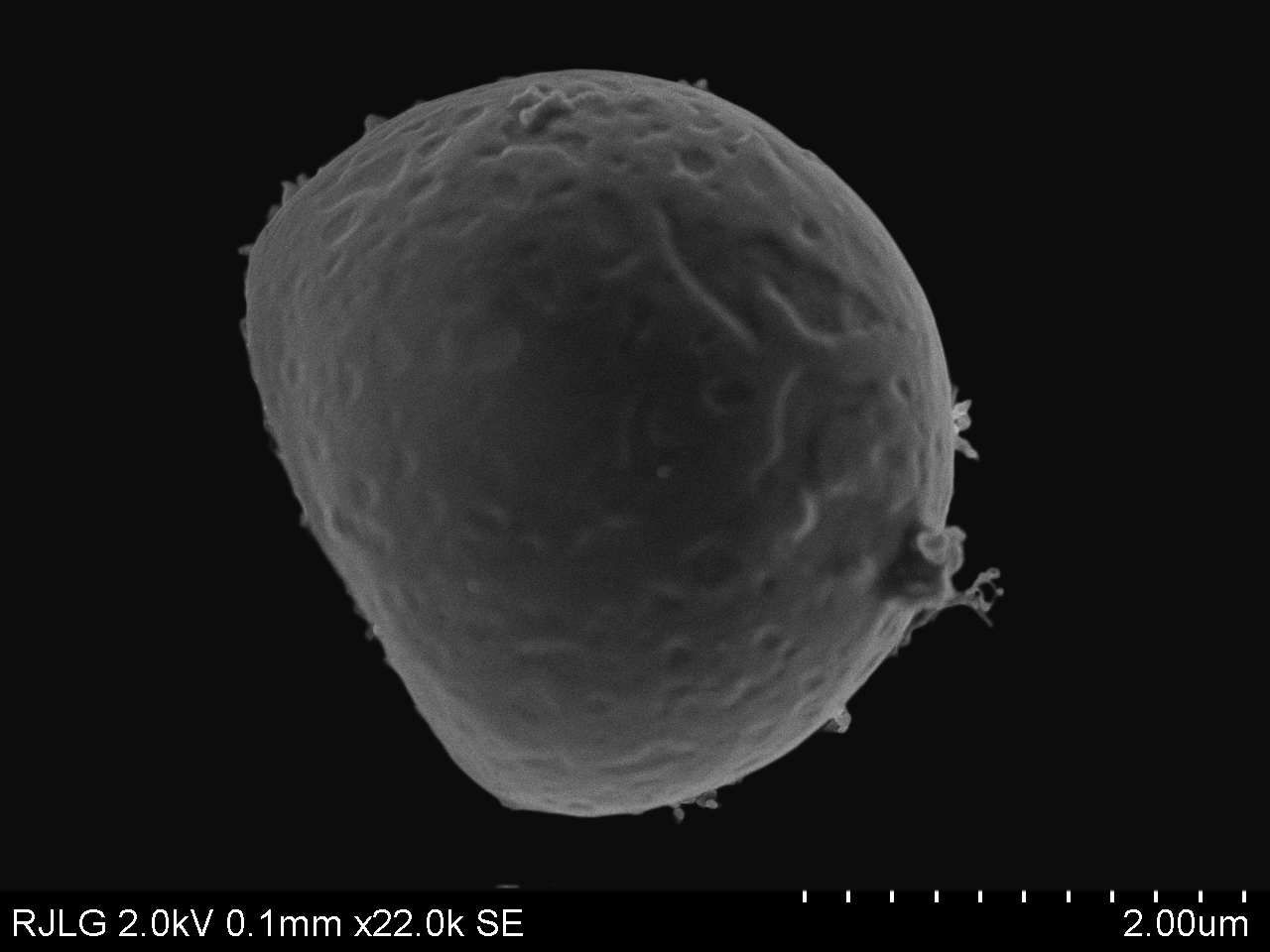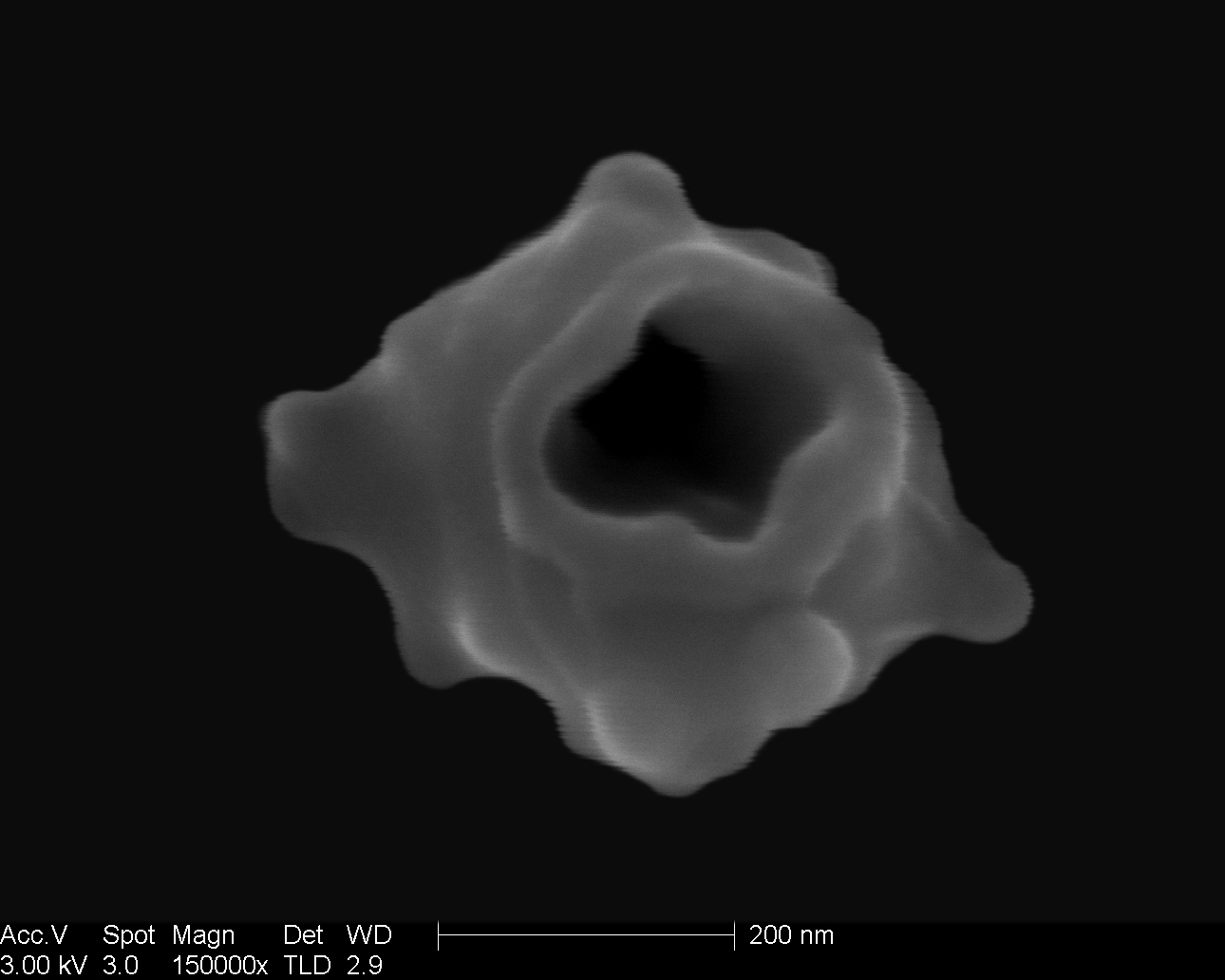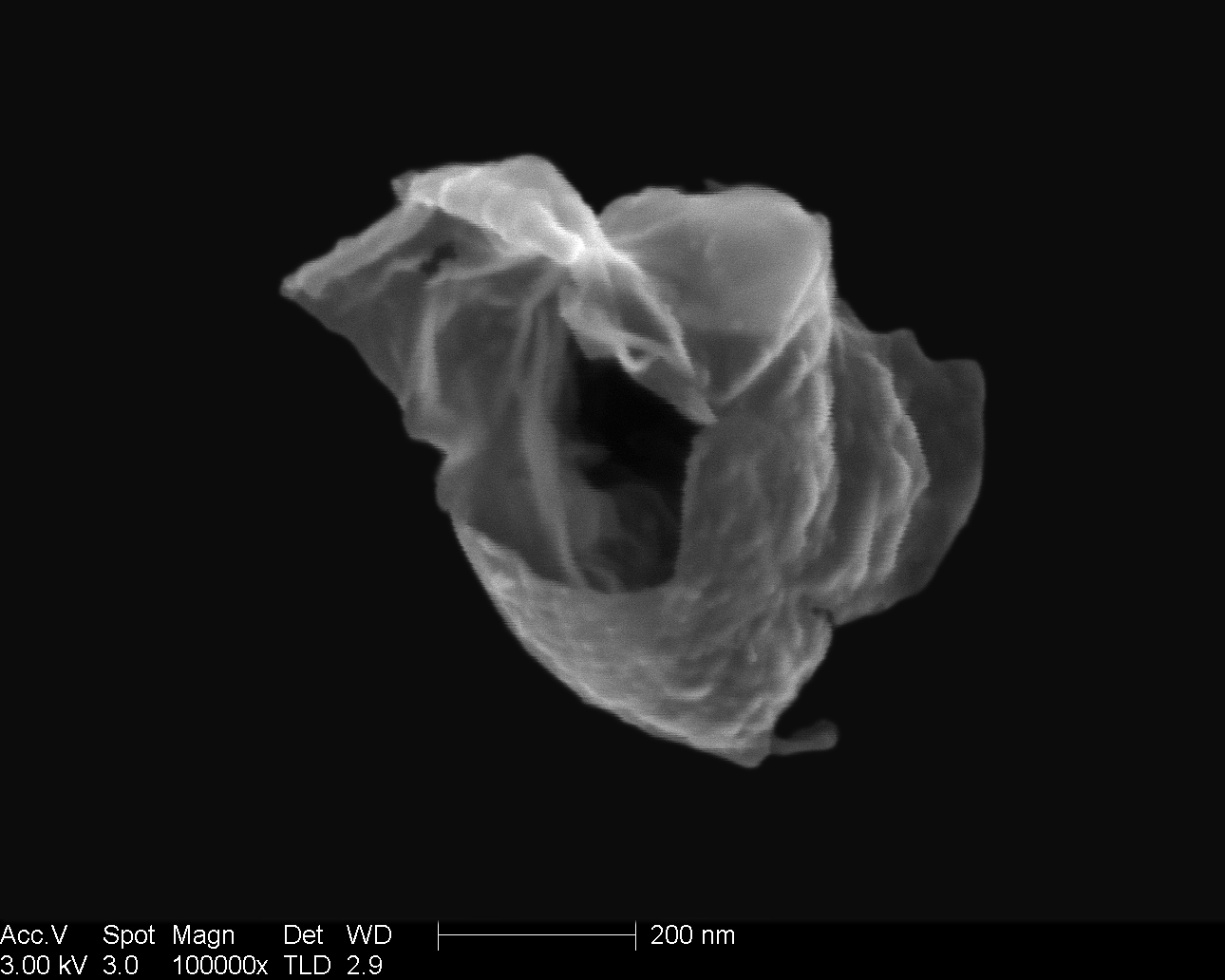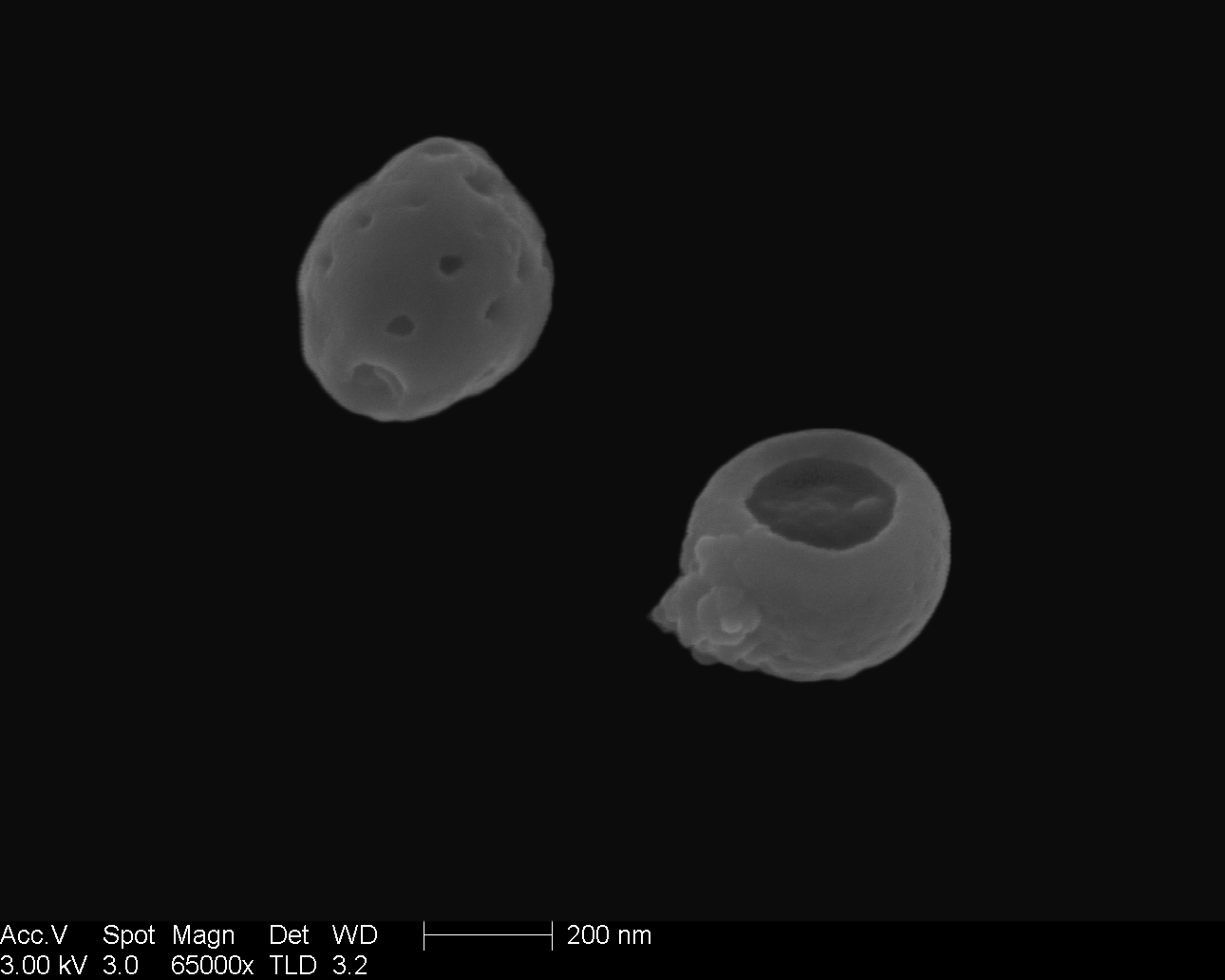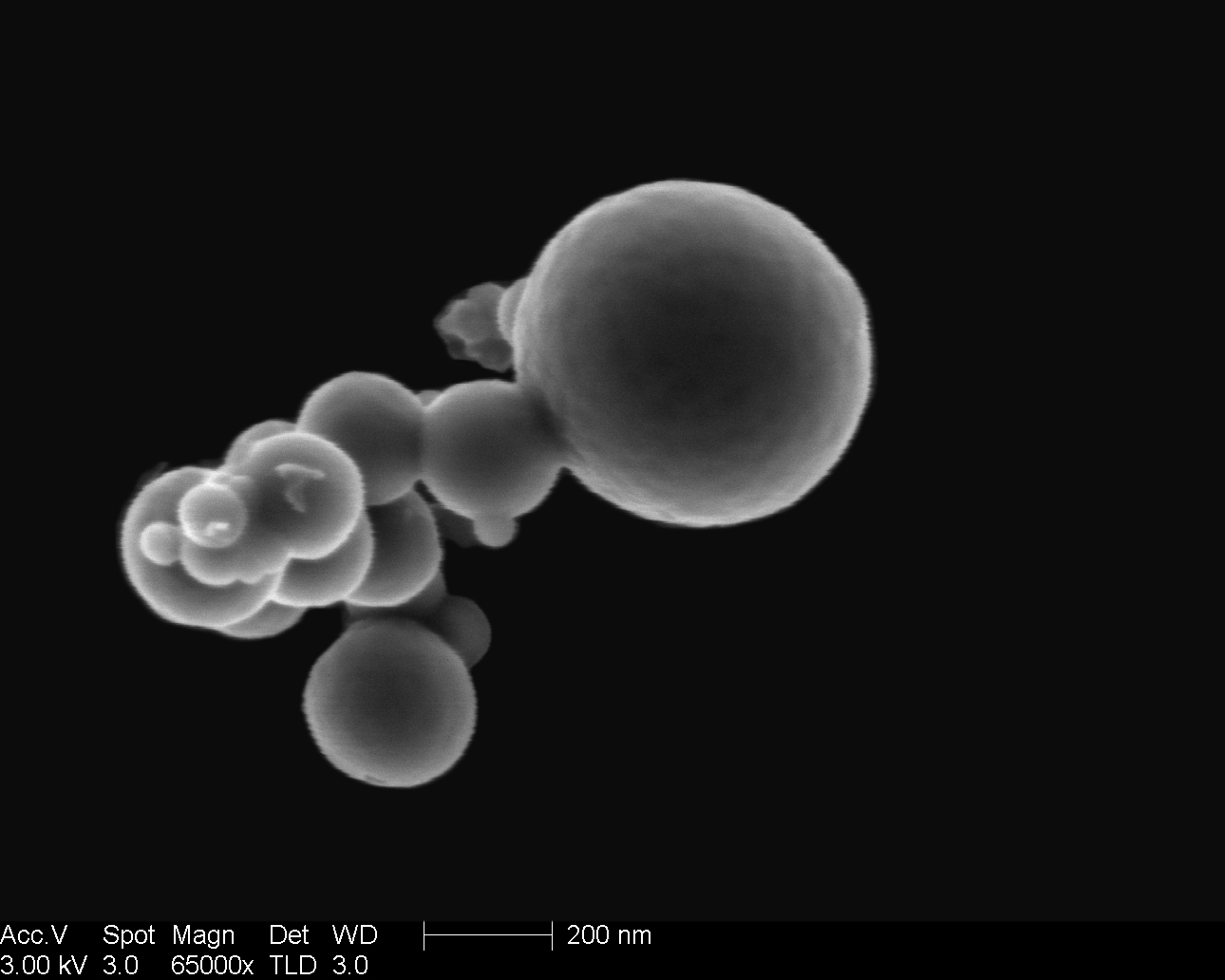Difference between revisions of "DAURE Microscopy"
| Line 35: | Line 35: | ||
Frequently found in the PM2.5 samples collected during traffic peak hours with sizes from 800 nm up to 5 µm. Some of them are frequently mixed with mineral particles. The most abundant are iron oxides (frequently linked to minor contents of titanium and zinc). | Frequently found in the PM2.5 samples collected during traffic peak hours with sizes from 800 nm up to 5 µm. Some of them are frequently mixed with mineral particles. The most abundant are iron oxides (frequently linked to minor contents of titanium and zinc). | ||
| + | {| border="0" cellpadding="3" | ||
| + | |||
| + | |-style="height:140px" | ||
| + | | align="center" bgcolor="lightgrey"| [[image:BCN01-16 Spore.jpg|450px]] || '''Particle 6''' <br>Fungi spore <br> Size = 3.3 µm <br> ''Composition:'' Major components: C, O; Minor components: S, Cl, Ca <br> | ||
| + | ---- | ||
| + | Notes: <br> Hiliferous appendix on the lower right, smooth ornament.<br> | ||
| + | |||
| + | |-style="height:140px" | ||
| + | | align="center" bgcolor="lightgrey"| [[image:FEI BCN012 1.jpg|450px]] || '''Particle 7''' <br>Non classified <br> Size = 410 nm <br> ''Composition:'' Major components: C, O; Minor components: S, Cl <br> | ||
| + | ---- | ||
| + | Notes: <br> Morphology with circular aperture and ornament that reminds a fungi spore.<br> | ||
| + | |||
| + | |} | ||
=== Mineral Particles === | === Mineral Particles === | ||
| + | |||
| + | |||
| + | {| border="0" cellpadding="3" | ||
| + | |||
| + | |-style="height:140px" | ||
| + | | align="center" bgcolor="lightgrey"| [[image:FEI BCN013 1.jpg|450px]] || '''Particle 8''' <br>Spherical AluminoSilicate (SAS particle) <br> Size = 3.3 µm <br> ''Composition:'' Major components: C, O; Minor components: S, Cl, Ca <br> | ||
| + | ---- | ||
| + | Notes: <br> Hiliferous appendix on the lower right, smooth ornament.<br> | ||
| + | |||
| + | |-style="height:140px" | ||
| + | | align="center" bgcolor="lightgrey"| [[image:FEI BCN013 1.jpg|450px]] || '''Particle 9''' <br>Non classified <br> Size = 410 nm <br> ''Composition:'' Major components: C, O; Minor components: S, Cl <br> | ||
| + | ---- | ||
| + | Notes: <br> Morphology with circular aperture and ornament that reminds a fungi spore.<br> | ||
| + | |||
| + | |} | ||
=== Soot Agglomerates === | === Soot Agglomerates === | ||
Revision as of 17:40, 7 April 2009
This page will contain electron microscopy images acquired by Esther Coz of CIEMAT at RJ Lee Group, Inc.
The images presented above have been acquired with two different high resolution Scanning Electron Microscopes (FEI Sirion400 and Hitachi S5500). Background has been automatically substracted from images to enhance the morphology, but no post processing has been applied on the particles after acquisition. The different relative content of each of the groups (and subgroups) presented below has been quantified and its variations at different times of the day have been analyzed together with the morphological descriptors of each group with a fully automated SEM (PSEM 500). The data is still under review/analysis.
Contents
Images from the BCN site
Primary Biogenic Organic Particles
Despite not being an important group in abundance, the microscopy analysis of PM2.5 samples from BCN site revealed a very rich diversity of this particle type. Several families of spores, vegetative and insect detritus and bacteria have been identified with sizes from 300 nm up to 4 µm. Some of them are frequently mixed with other anthropogenic aerosols.
Heavy Metal Oxides
Frequently found in the PM2.5 samples collected during traffic peak hours with sizes from 800 nm up to 5 µm. Some of them are frequently mixed with mineral particles. The most abundant are iron oxides (frequently linked to minor contents of titanium and zinc).
Mineral Particles
Soot Agglomerates
Other Carbonaceous Particles
Externally Mixed
Images from the MSY site
Upcoming...
